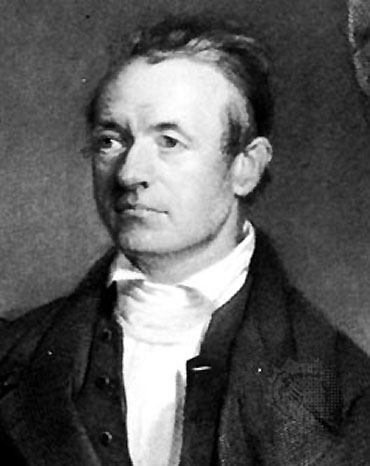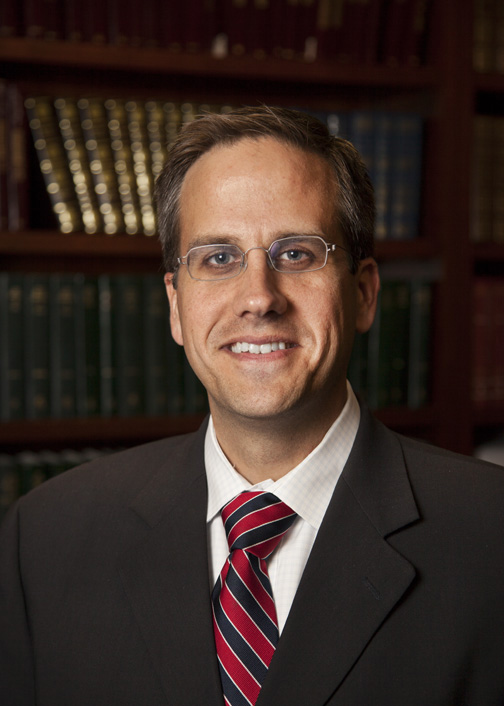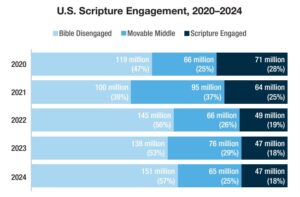
FORT WORTH, Texas (BP) — The rocks signified a specific event in Israel’s history. The crossing of the Jordan into the Promised Land — a supernatural event — revealed God acting on behalf of His people to keep His promise, show His faithfulness, and display His might. While the generation who migrated across the divided river would never forget walking through that divinely made aisle, human nature and subsequent circumstances likely would have prevented those distinct memories from remaining with the next generation.
So, the Lord God instructed Joshua to create the small tower — not a man-made object of worship or a magical location for accessing the divine favor — but rather a catalyst of remembrance, a memorial (Joshua 4:19-24). Prone to wander, the Israelites needed a physical object to remind them of the great work of God so that they might remain both grateful for and faithful to Him.
 However, the establishment of the memorial also conveyed a message to the watching world. Only a God of great might could act to deliver His own people in this manner. The memorial stones were meant to witness to the world that the God of Israel was faithful and true.
However, the establishment of the memorial also conveyed a message to the watching world. Only a God of great might could act to deliver His own people in this manner. The memorial stones were meant to witness to the world that the God of Israel was faithful and true.
Not long after the international celebration of the Judson Centennial in 1913 — the anniversary of the Gospel being brought to the country — Baptists in Burma erected a sizable memorial stone on the site of the Let-Ma-Yoon prison to commemorate Adoniram Judson’s missionary legacy and sacrifice for the Burmese. Pictures of the stone are difficult to find today, but an inscription on one side tells how Judson, “in this prison of horror which stood here sustained in his faith in the Lord Jesus Christ, and by the devotion of his heroic wife, endured unrecorded sufferings from June 1824 to May 1825.”
After the political winds changed in Burma and it became Myanmar, the government sought to eradicate all references to Judson throughout the country. In 1988, the bicentennial year of Judson’s birth, Myanmar authorities tried to bulldoze the stone and throw it in the river. Due to its immense size, all attempts failed and the authorities determined their only option was to bury it. For the last 24 years, the monument designed to introduce Judson and Judson’s God to future generations has been covered.
For all the years I have worked for him, I had heard how Paige Patterson, with the aid of friends, had found his way to the Let-Ma-Yoon prison. Patterson regularly described what was left of the prison grounds with colorful attention to detail. The landmarks that Judson saw, enormous trees and a leaning palace tower, still remained along with tall overgrown brush. Amid a clearing where the prison once stood and under which the memorial stone is buried, Patterson and friends reenacted Judson’s plight. To hear the story was to live it and my admiration for the Judsons only grew.
During the summer of 2010, after teaching seminary students in a neighboring country, I set out to see if the prison or location of the memorial stone could still be found. To my surprise however, it was not the ultimate discovery of a hidden prison, but what I heard there, that made all the difference.
After a day of dusty and cumbersome travel, I hoped that I would soon arrive at Let-Ma-Yoon. Had my translator and I not sought the help of a local elderly man, we would not have found it. Remarkably, the local man not only knew where to take us, but also knew the significance of what was there.
Once we arrived, I walked out into a nearby field to survey the scene while my translator and the elderly man stayed under three large trees talking in their native tongue. Standing in the field, weeds taller than my shoulders grew wildly all around for several acres. As I took video footage and a few photographs on a very windy day, it took me a moment to realize that the elderly man and my translator’s conversation had grown in volume and intensity. The old man kept pointing to the ground under the trees and repeated the same phrase again and again. My translator had tears in his eyes when he turned to me to explain.
“This man knows about the memorial stone that is buried here. He says he has lived in this area his entire life and remembers the time when the stone was visible for all to see. Now that it is buried, he knows there is a generation who knows nothing of Judson and what Judson did for Burma.
“He told me that he knows he is old and will soon die. He said to me that since I am young he would like me to make him a promise. He said that should the political situation ever change in this country, he wants me to promise him that I will come and dig up the stone and restore it so people will once again know of Judson.
“And then he started pleading and saying, ‘Please come and dig. Please come and dig. Please come and dig.'”
As I write this, the cry of an elderly Burmese man to please come and dig still rings in my ears. Just as Paul heard the Macedonian call in Acts 16 to go and preach the Gospel, whether he knows it or not, such is the real substance of this elderly man’s call to dig.
Memorial stones and missionary legacies are important, but one day they, too, will fade. The call to please come and dig is the call Adoniram Judson first answered when he left America for Burma 200 years ago. It is the call that still goes out for many no longer to build upon other’s foundations (Romans 15:20), but instead to go to the places where the name of Christ is suppressed, buried or not known. There are peoples from every tribe, tongue, and nation ready to hear of the Lord Jesus that Judson proclaimed, but how will they hear unless a new generation of Judsons is sent (Romans 10:15)?
Regardless of the state of a buried rock under three trees in Myanmar, the life and mission of Adoniram Judson itself is truly a memorial stone that points to the mercies of God in Christ. Just as Joshua 4:24 explains that Joshua’s memorial stone existed “so that all the peoples of the earth may know that the hand of the LORD is mighty,” so does Judson’s life and mission.
Nearing the 200th anniversary of Judson’s departure for missionary service it is fitting to unearth this metaphorical stone and present a call to imitate Adoniram Judson in taking the Gospel to the ends of the earth.
Right now there is an old man in Myanmar holding out hope that someday someone will unearth the large granite stone and tell a new generation of Burmese about Adoniram Judson. However, what the people of Myanmar need more is a new generation of Judsons coming to tell them about Jesus.
Please go and dig.
–30–
Jason G. Duesing serves as vice president for strategic initiatives and assistant professor of historical theology at Southwestern Baptist Theological Seminary and is the editor of the forthcoming book, “Adoniram Judson: A Bicentennial Appreciation of the Pioneer American Missionary” (B&H Academic, 2012). This article is an adaption of the author’s conclusion from that volume. Get Baptist Press headlines and breaking news on Twitter(BaptistPress), Facebook(Facebook.com/Baptist Press) and in your email(baptistpress.com/SubscribeBP.asp).















